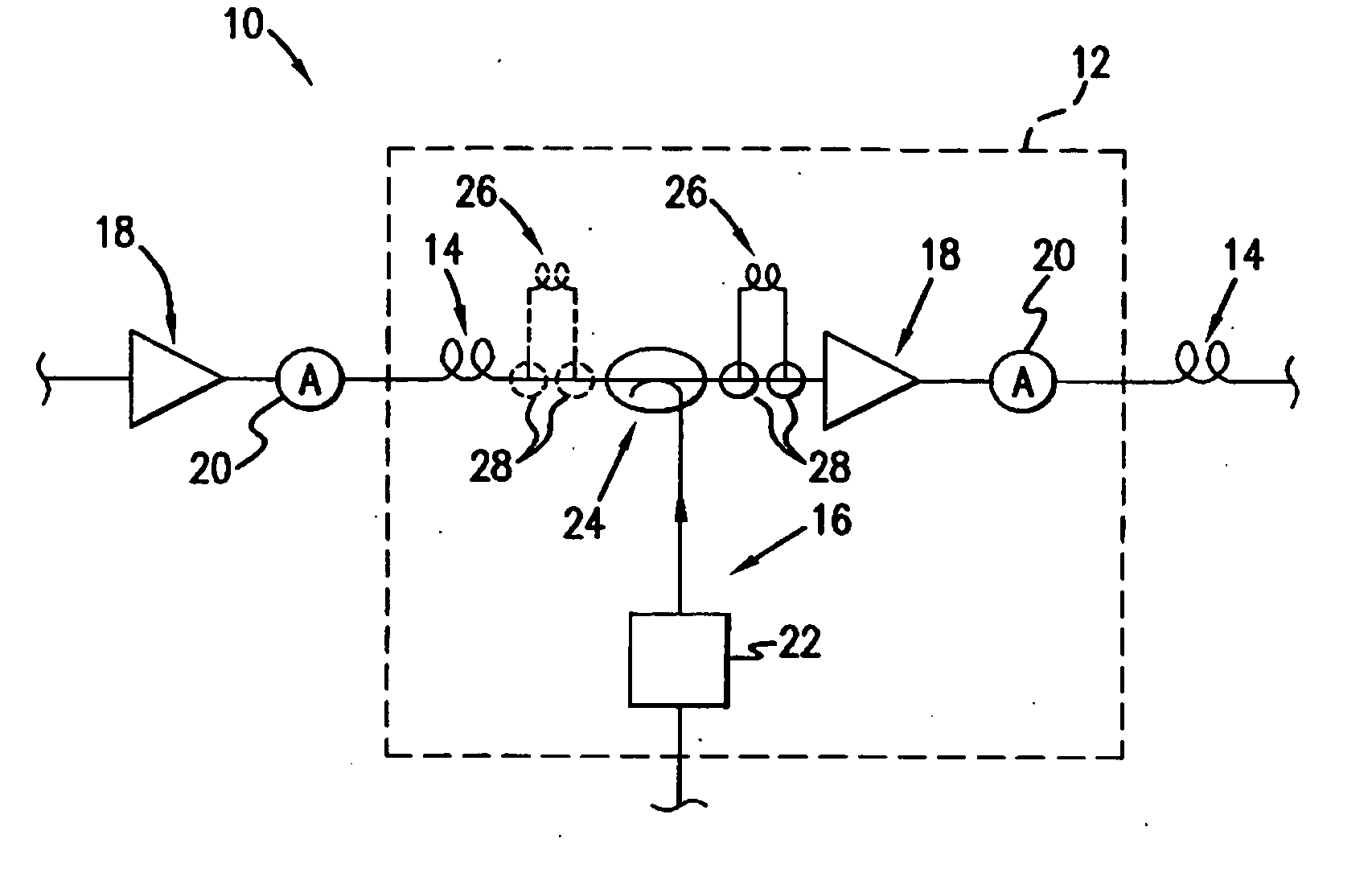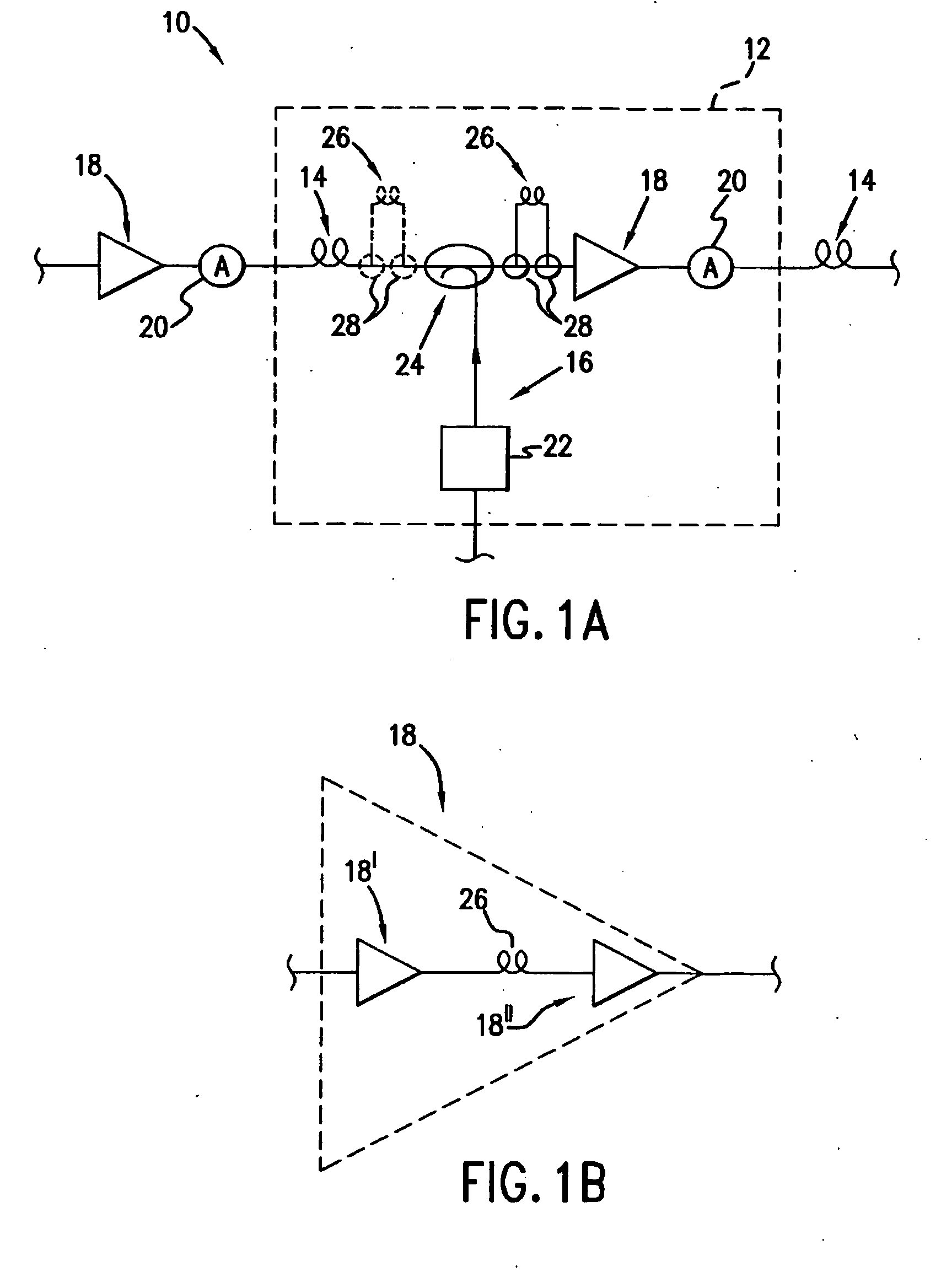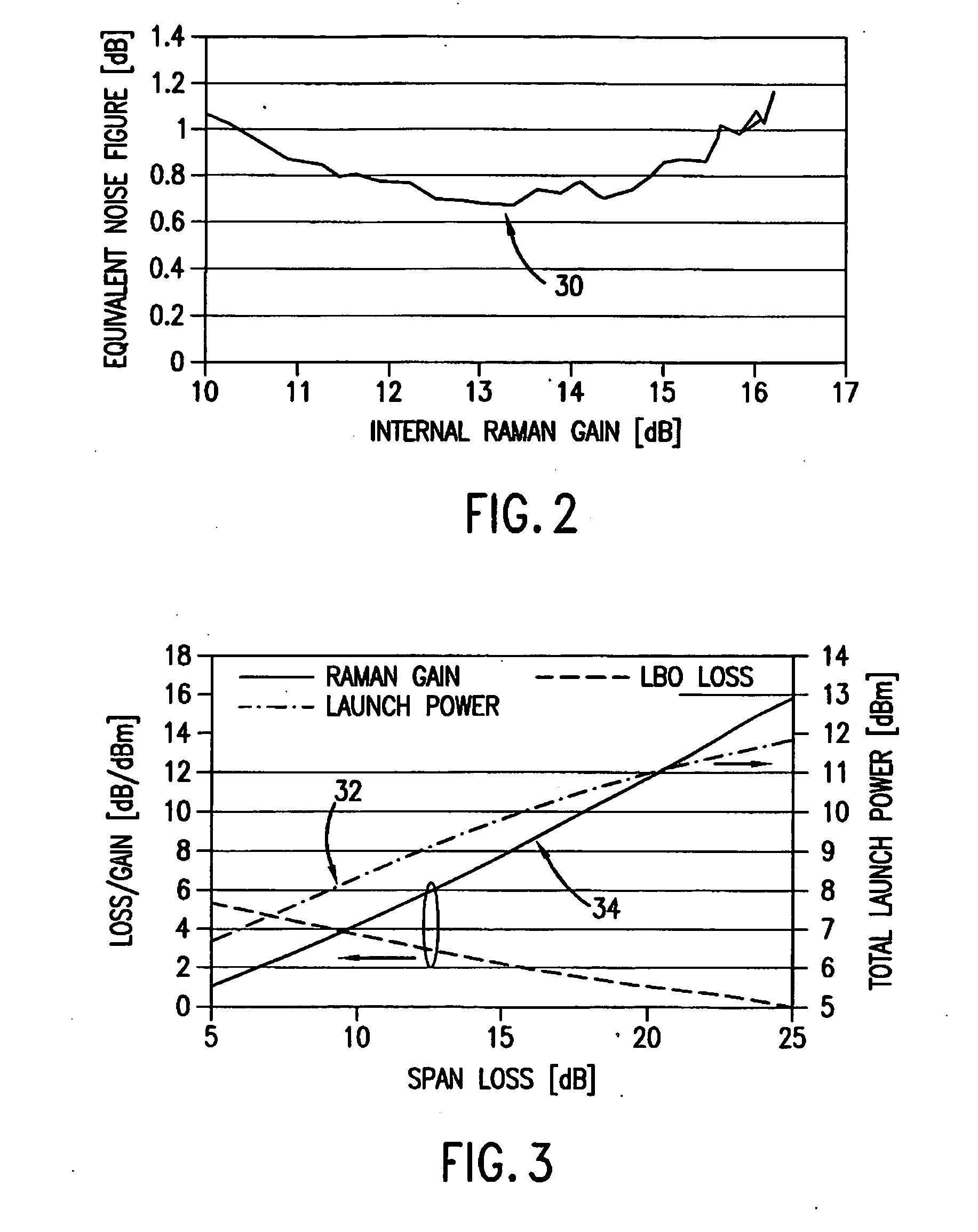Raman assisted EDFA system and method
a technology of edfa and raman, applied in the field of optical telecommunications systems, can solve the problems of amplitude distortion, limited maximum distance optical signals can travel through optical fiber before degrading to the point of being undetectable by a receiver, and difficulty in maintaining appropriate gain and low noise, so as to reduce the increase of noise accumulation
- Summary
- Abstract
- Description
- Claims
- Application Information
AI Technical Summary
Benefits of technology
Problems solved by technology
Method used
Image
Examples
Embodiment Construction
[0027] Reference will now be made in detail to the present preferred embodiments of the invention, an example of which is illustrated in the accompanying drawings.
[0028] An exemplary embodiment of the present invention is shown in FIG. 1A and is designated generally by reference numeral 10. As embodied herein and referring to FIG. 1, a portion of an optical communication system 10, including at least one Raman assisted EDFA hybrid amplifier 12. The hybrid amplifier includes transmission fiber 14, a Raman gain source 16, an EDFA gain source 18, and an optical attenuator 20. The Raman gain source 16 includes a Raman pump module 22, having one or more Raman wavelengths. Each can be independently adjustable through separate attenuators or through bias adjustments. In this preferred embodiment, the Raman gain source 16 is coupled to the transmission fiber 14 by way of coupler 24. The coupler may be any known type such as a WDM module or a 3 dB device. The Raman gain is introduced into t...
PUM
 Login to View More
Login to View More Abstract
Description
Claims
Application Information
 Login to View More
Login to View More - R&D
- Intellectual Property
- Life Sciences
- Materials
- Tech Scout
- Unparalleled Data Quality
- Higher Quality Content
- 60% Fewer Hallucinations
Browse by: Latest US Patents, China's latest patents, Technical Efficacy Thesaurus, Application Domain, Technology Topic, Popular Technical Reports.
© 2025 PatSnap. All rights reserved.Legal|Privacy policy|Modern Slavery Act Transparency Statement|Sitemap|About US| Contact US: help@patsnap.com



